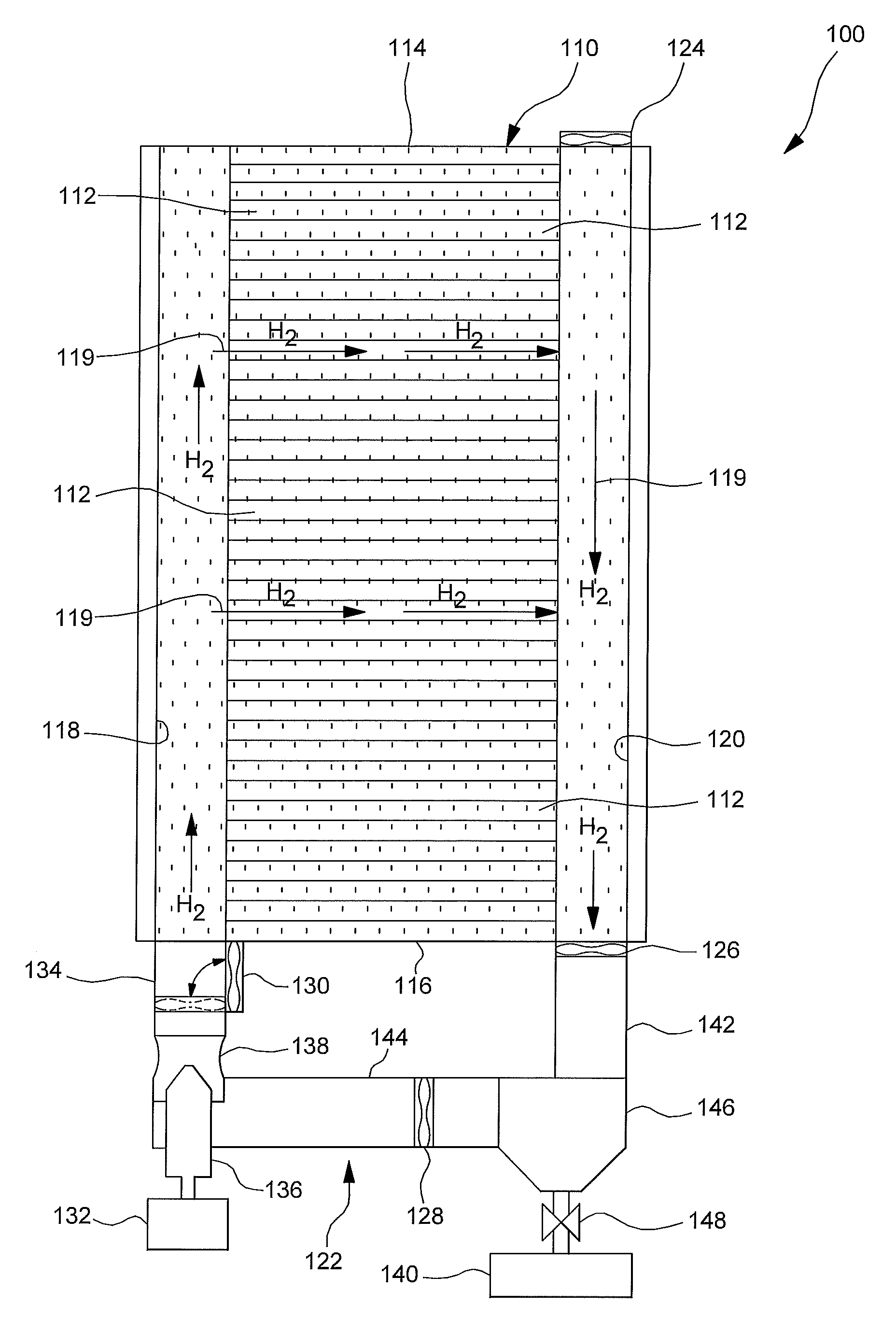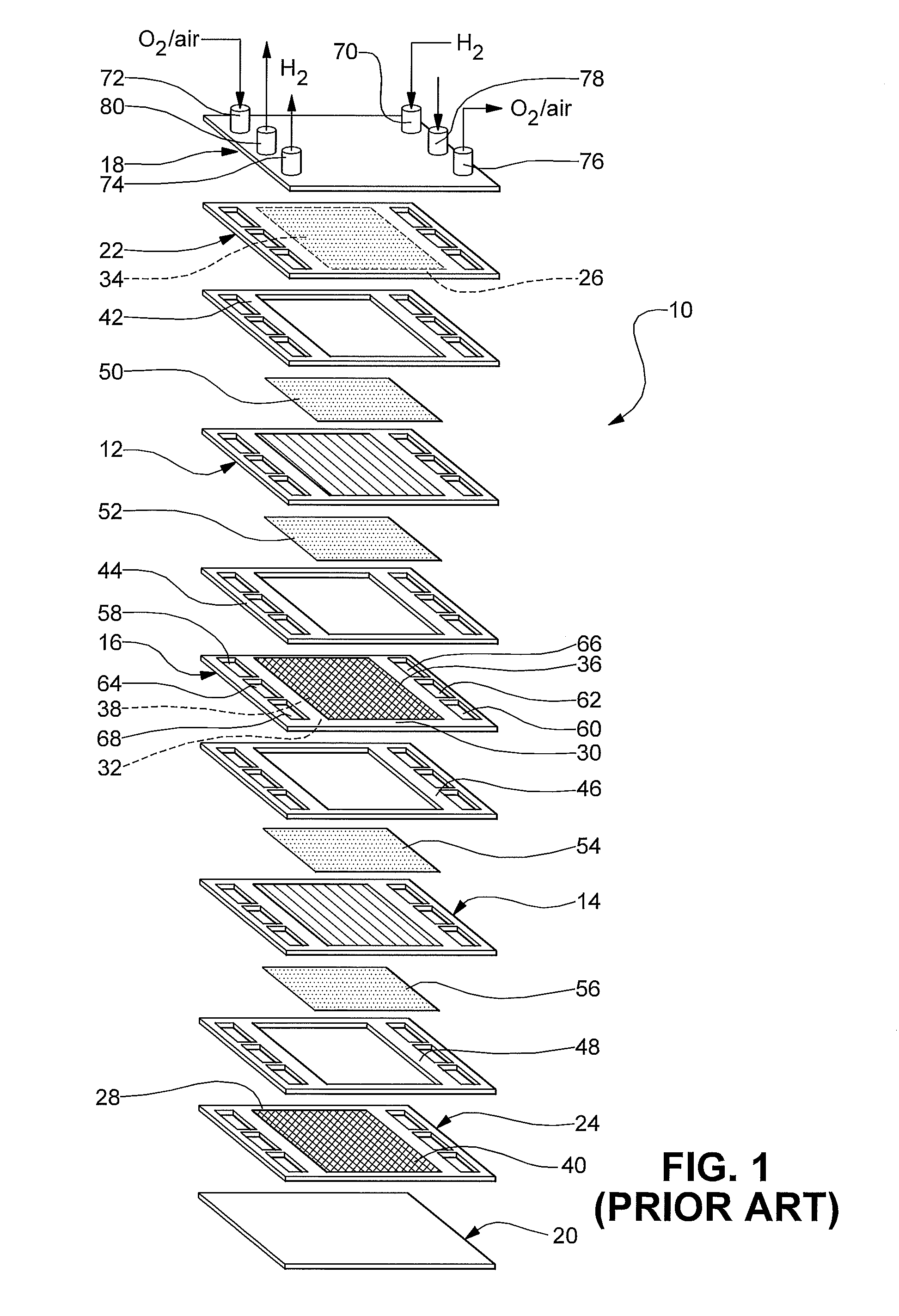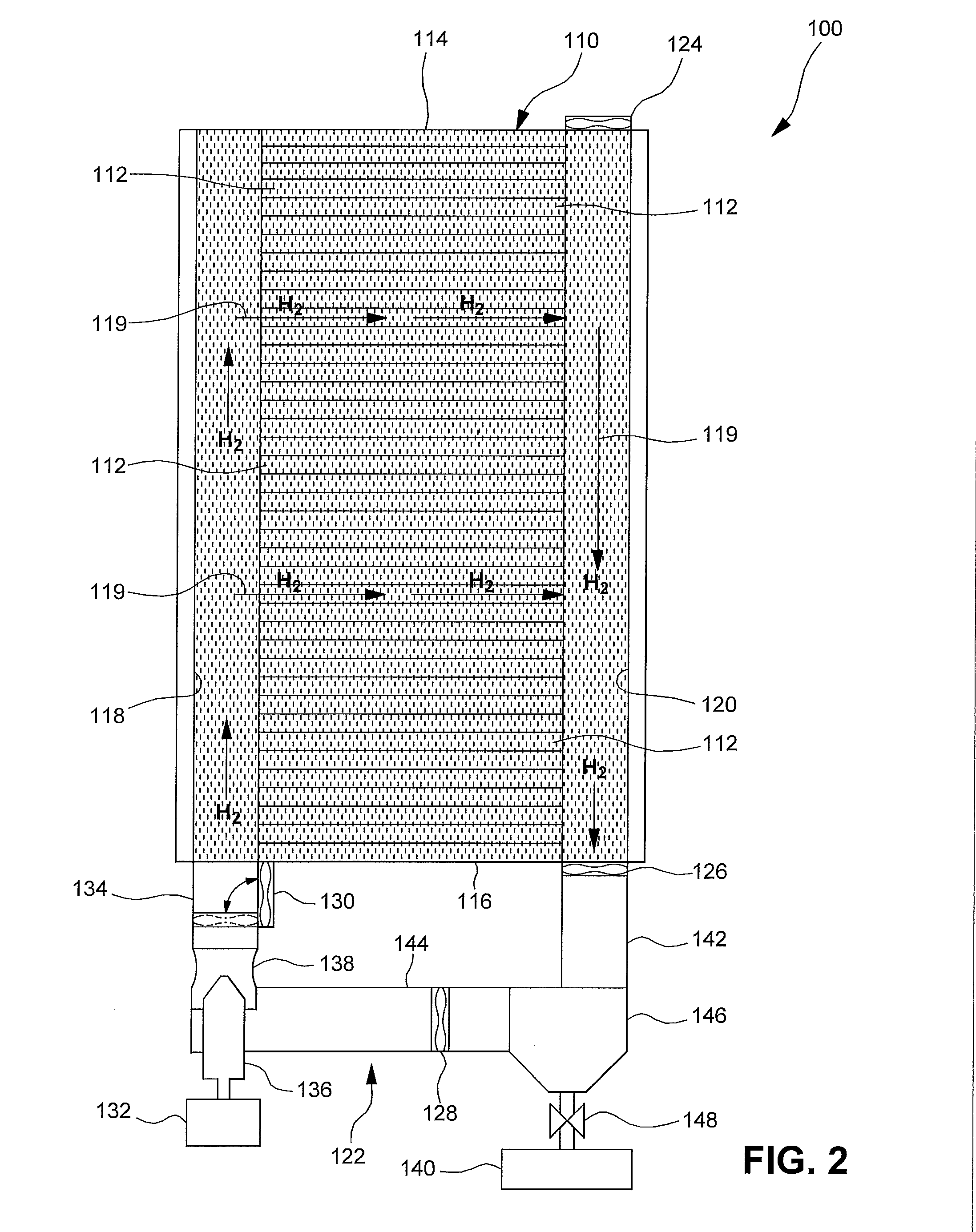Shutdown strategy to avoid carbon corrosion due to slow hydrogen/air intrusion rates
a hydrogen/air intrusion rate and carbon corrosion technology, applied in the field of hydrogen fuel cells, can solve the problems of short distance, rapid corrosion of fuel cell carbon substrates and catalyst supports, and degraded fuel cell performance, so as to maximize the durability of the fuel cell system, not sacrificing the hydrogen-hydrogen shutdown strategy, and minimizing carbon corrosion
- Summary
- Abstract
- Description
- Claims
- Application Information
AI Technical Summary
Benefits of technology
Problems solved by technology
Method used
Image
Examples
Embodiment Construction
[0019]The following detailed description and appended drawings describe and illustrate various embodiments of the invention. The description and drawings serve to enable one skilled in the art to make and use the invention, and are not intended to limit the scope of the invention in any manner. In respect of the methods disclosed, the steps presented are exemplary in nature, and thus, the order of the steps is not necessary or critical.
[0020]For simplicity, only a two-cell stack (i.e. one bipolar plate) is illustrated and described in FIG. 1, it being understood that a typical fuel cell stack will have many more such cells and bipolar plates.
[0021]FIG. 1 illustrates a PEM fuel cell stack 10 according to the prior art. The fuel cell stack 10 includes a pair of membrane electrode assemblies (MEAs) 12, 14 separated by an electrically conductive bipolar plate 16. The MEAs 12, 14 and the bipolar plate 16 are stacked between a pair of clamping plates 18, 20 and a pair of unipolar end plat...
PUM
 Login to View More
Login to View More Abstract
Description
Claims
Application Information
 Login to View More
Login to View More - R&D
- Intellectual Property
- Life Sciences
- Materials
- Tech Scout
- Unparalleled Data Quality
- Higher Quality Content
- 60% Fewer Hallucinations
Browse by: Latest US Patents, China's latest patents, Technical Efficacy Thesaurus, Application Domain, Technology Topic, Popular Technical Reports.
© 2025 PatSnap. All rights reserved.Legal|Privacy policy|Modern Slavery Act Transparency Statement|Sitemap|About US| Contact US: help@patsnap.com



